🙂
Every place has its unique history that is reflected in its food, architecture of its homes and buildings, customs and traditions and its music and dance. These are then the best ways to experience a place either as a first time visitor or on repeat visits. Hence our heritage walk in Goa. I am a firm believer of that the best way to ‘see’ a place is through the eyes of local people who are passionate about it. This led us to Cholta Cholta as “All tours are conducted in English and are led by local experts who support walking and learning” (quote from the website).
* From the 10th
century AD, Goa
was successively ruled by the Kadambas, then Muslim rulers who were the
Shahs
from Bijapur and then the Portuguese. At all times, it remained
flourishing trading centre and had sea-links with far flung Arab nations
and later with the south-eastern
nations. The movement of goods and people and rulers and
administrations from these regions influenced homes, buildings and the
people
of Goa. Its architecture,
crafts, arts, homes, names, religious practices are an interesting
amalgamation of these.*
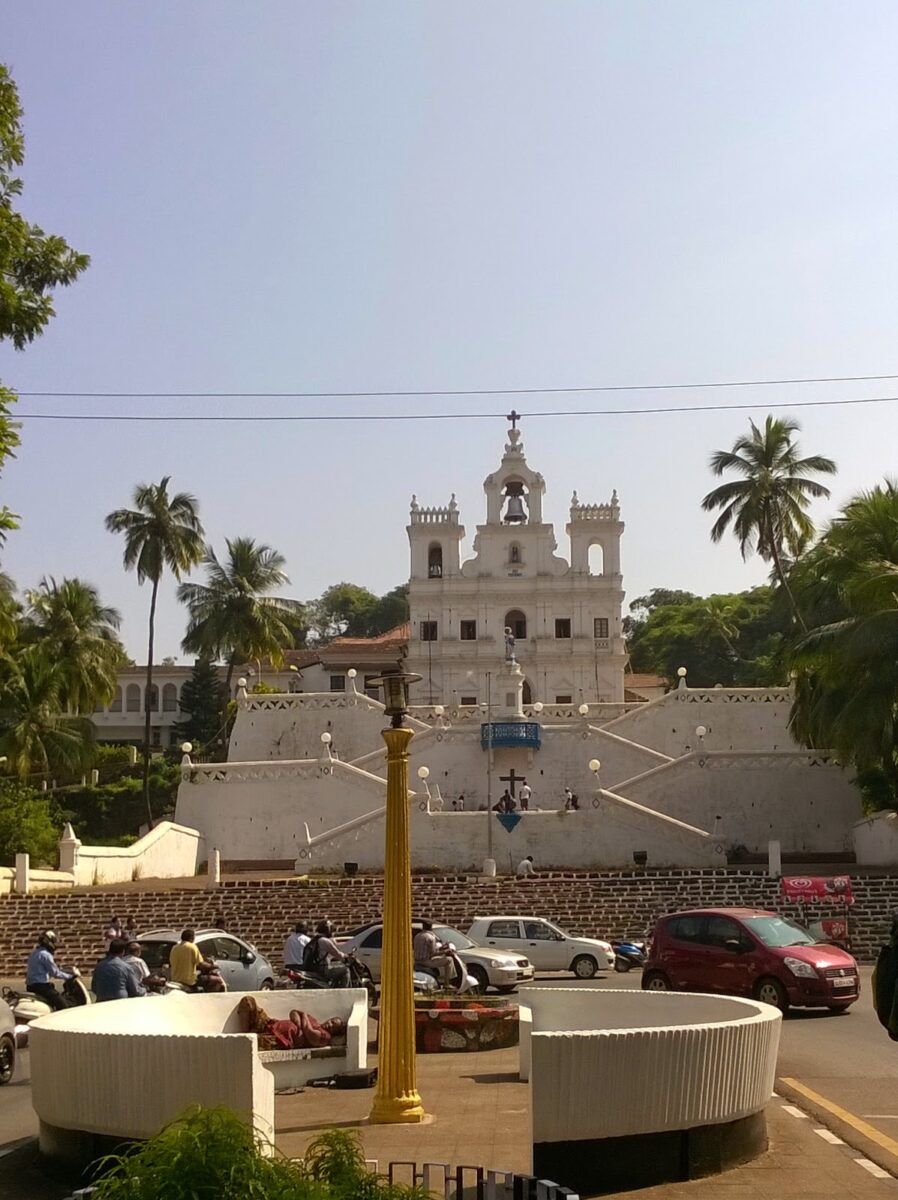
Well-entrenched a few hundred years ago, we walked out and turned into the lane next to the Altinho hill and stopped to admire the majestic staircase that leads up to the Palace of the Archbishop
of the Goan Diocese. Many generations must have gone up and down these and still do but a survival instinct in busy traffic forced back into the present moment.
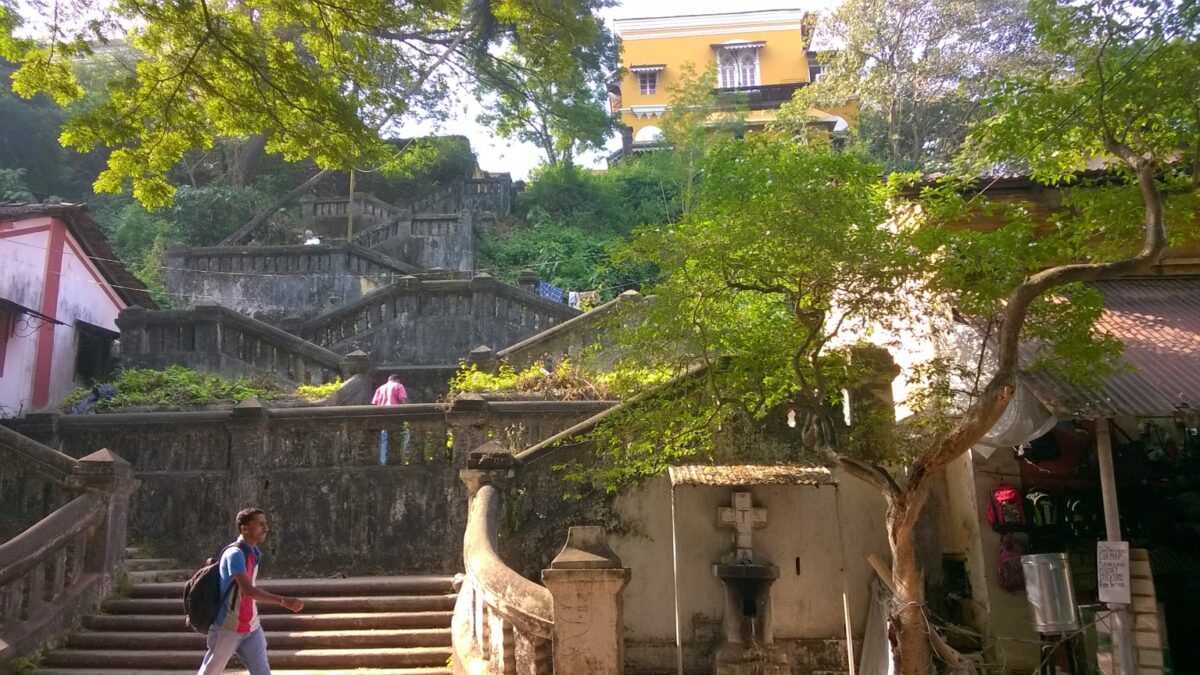
The walls adjoining the street were festooned with colourful
Bougainvilleas and Madhumalati (Rangoon Creeper) adding another touch
from colour palette. The view from the top would be stupendous for sure
but we had to hurry to keep up with our leader… we were on a walking
tour remember?
The buildings in these parts were not the modern high rise structures
rather small one or two storey homes with sloping tiled roofs set in small winding lanes. We were
in Fontainhas the so-called Latin quarter of Goa. Every structure was of
a different colour which were natural dyes we learnt. So it was turmeric or indigo which was the secret of the fascinating colourful homes. Many of these have been restored to their old glory for people to live in or have been turned into guest houses or art galleries.
Many families continue to use old and priceless crockery and furniture and artifacts
on a daily basis. Wow! Its antiques like these that serve as a bridge
between our past and present and allow us to effortlessly time-travel
across hundreds of years. Those who are able to enjoy the
best of both worlds are incredibly lucky.
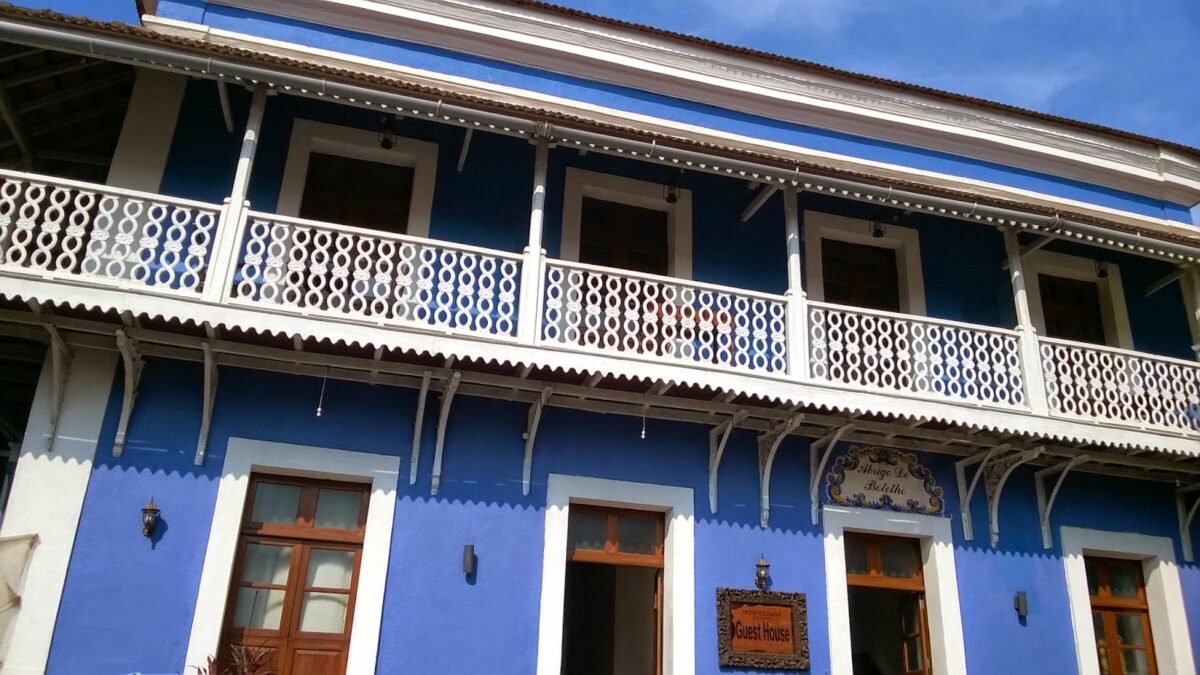
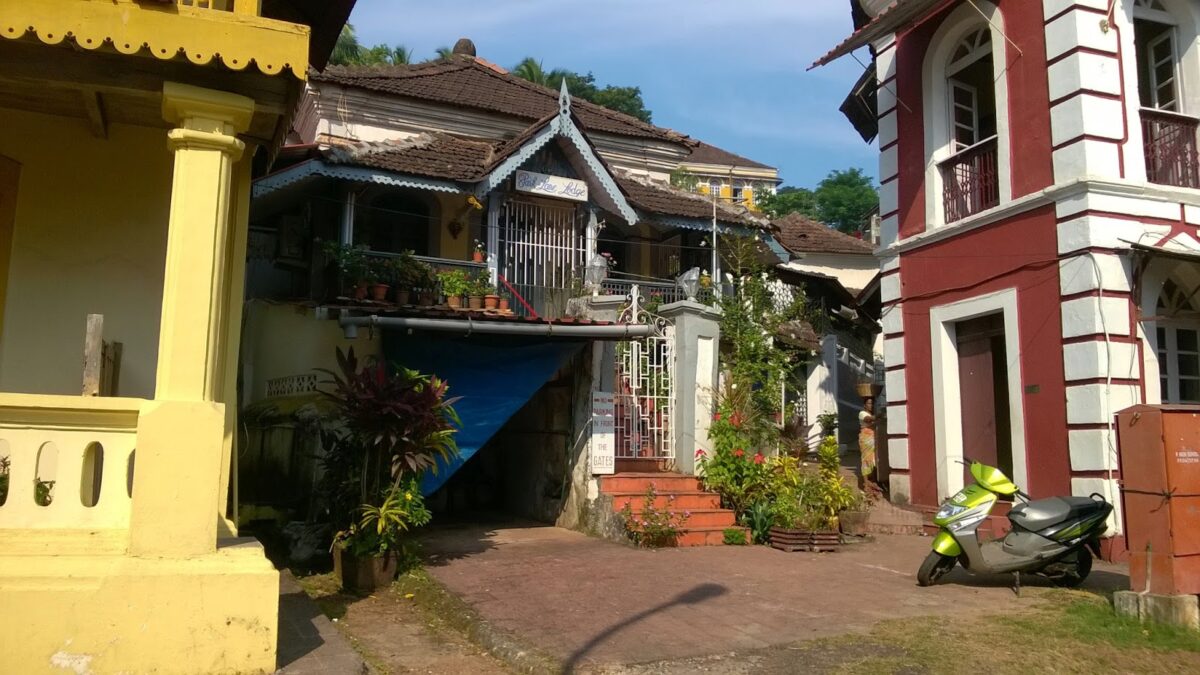 |
Besides other unique features, we noticed the shell windows and tiled ceramic name plates at the entrances. Shell was a wonderful material for windows as it gave privacy plus diffused light. The tiles were typical Azulejos art which is a Portuguese craft of painted and glazed ceramic tiles. Artists have kept this art alive in Goa.
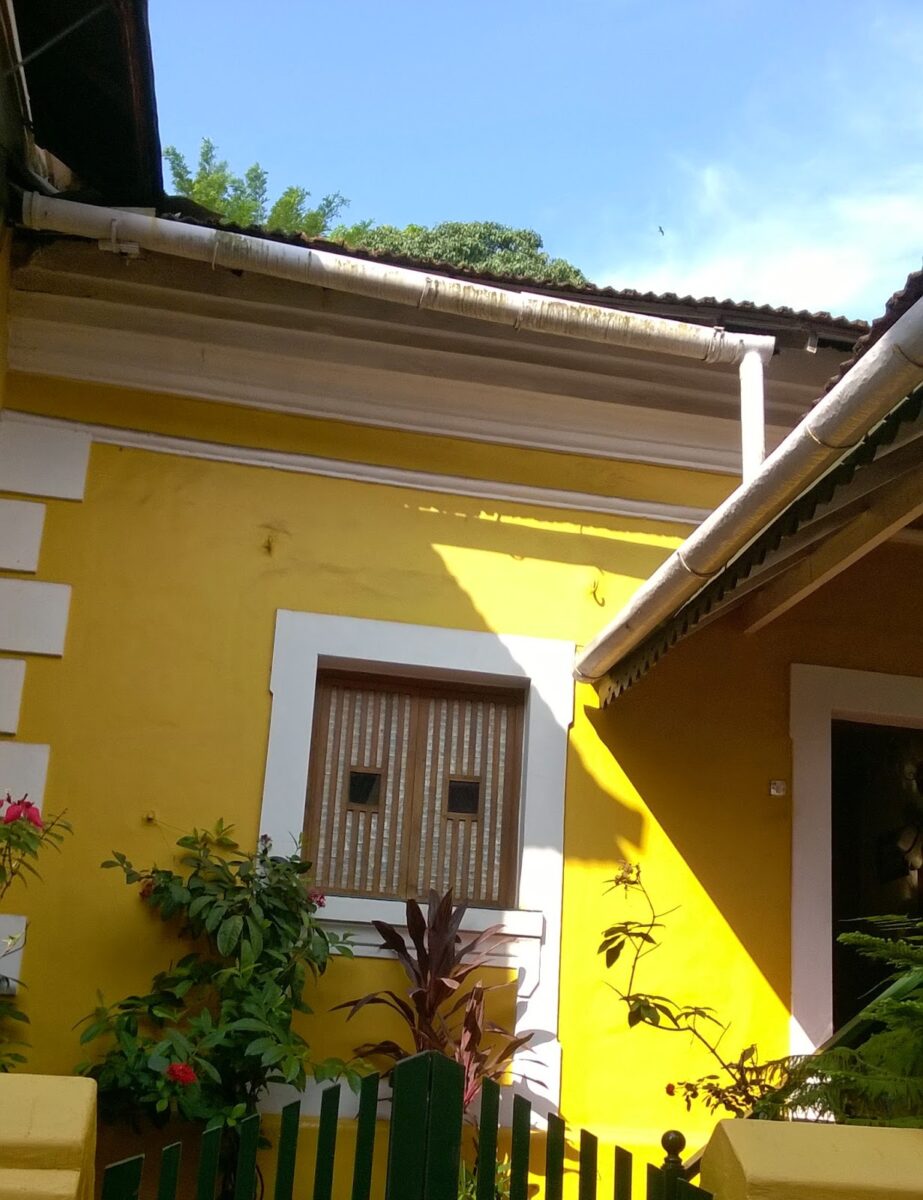 |
| Shell windows |
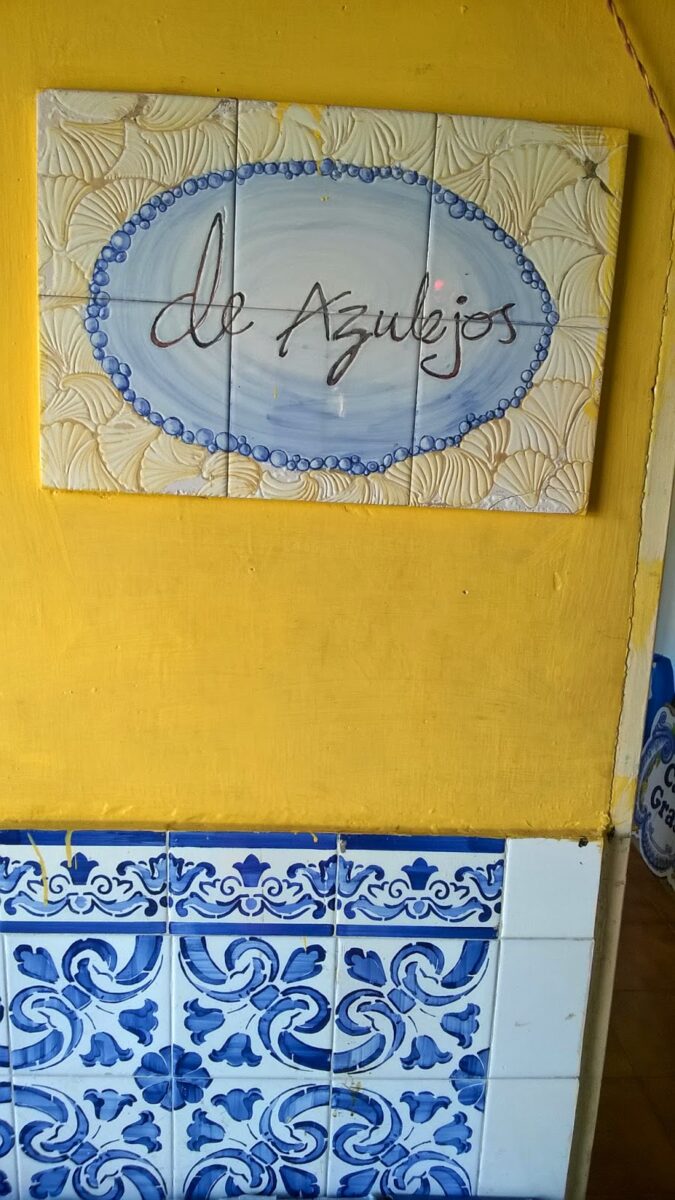 |
| An example of Azulejos art but this image is not from our walk of Fontainhas |
The chapel dominates the square and would have been an activity hub in
the years gone by. Street planning was not conspicuous in this charming
quiet neighbourhood.
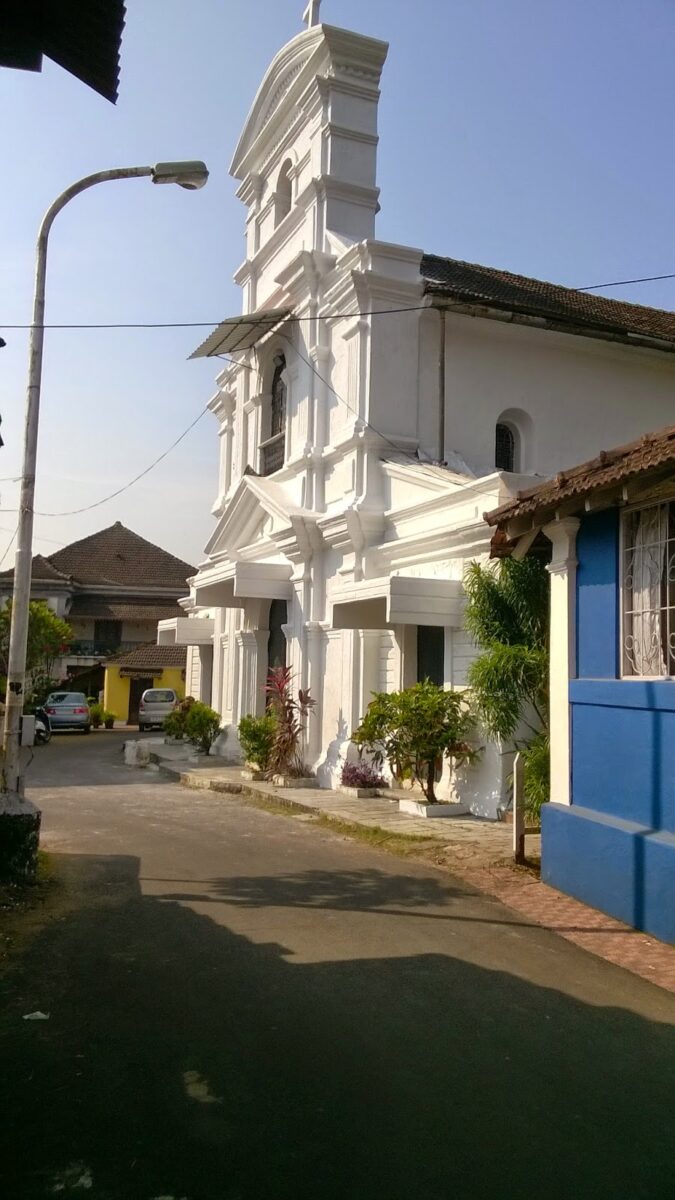
We walked out toward the riverfront through an area which seems to have planned streets and road side drains. The quaint overhanging balconies protect pedestrians from rain and sun! This area still has shops of the ‘old’ trades – Typewriter repairs for example! The narrow sidewalks had local vendors who sold fresh Papayas, Tomatoes, Bananas and bunches of Tirphal which is spice specially used in Goan food.
Very soon we had reached the Tobacco Square so named because Goa was a trading hub for tobacco despite tobacco cultivation certainly not being in the vicinity. We then moved past the summer palace of the Sultan of Bijapur (Idalco Palace) to the Abbe Faria Square and the home of Mhamai Kamats. The municipal garden named after Garcia de Orta (who was a physician and naturalist) was up next with its very thoughtful layout of stores. Our walk ended at the Cafe Tato with some authentic Goan breakfast.Yummmmm
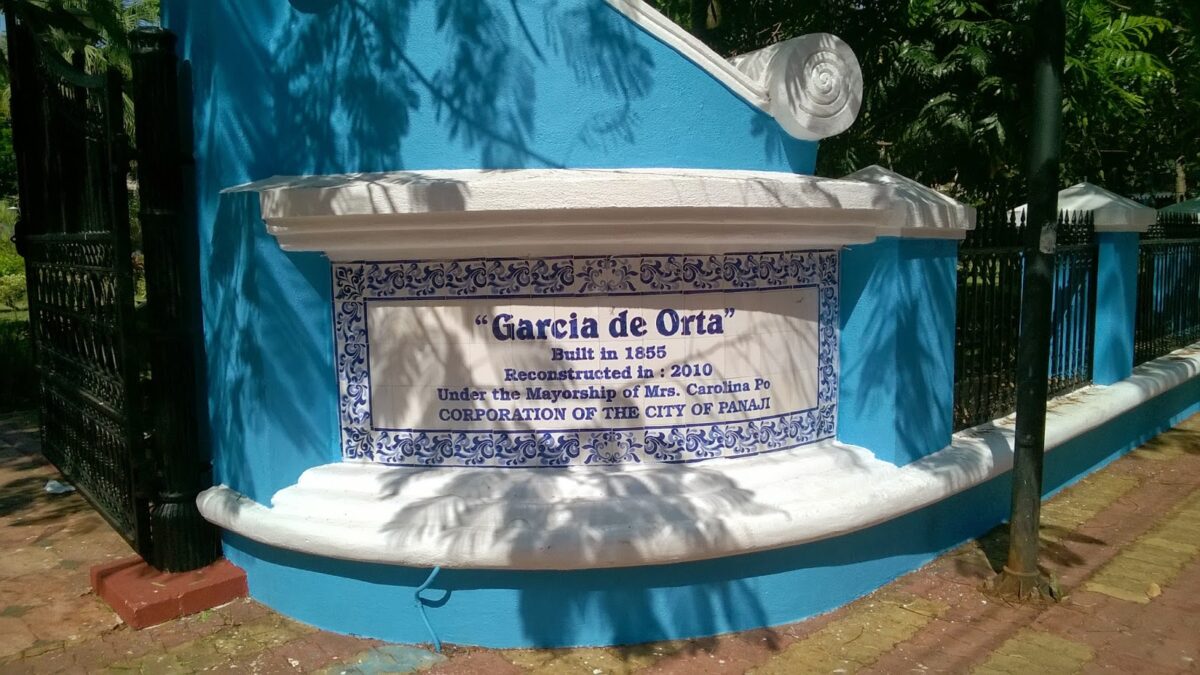 |
| Municipal garden at Panjim |
Each of these places has a very interesting tale and some of which is in Cholta Cholta’s book called ‘Cholta Cholta’.
A memorable walk down memory lane and well off the beaten track!
Truly a walk to remember.
🙂
*Disclaimer: I am not a historian so this post is quite likely to have
overlooked several important events. Do refer to more learned resources
if Goa’s history is what you are looking for.*
**Disclaimer: I have no interest financial or otherwise in Cholta Cholta .
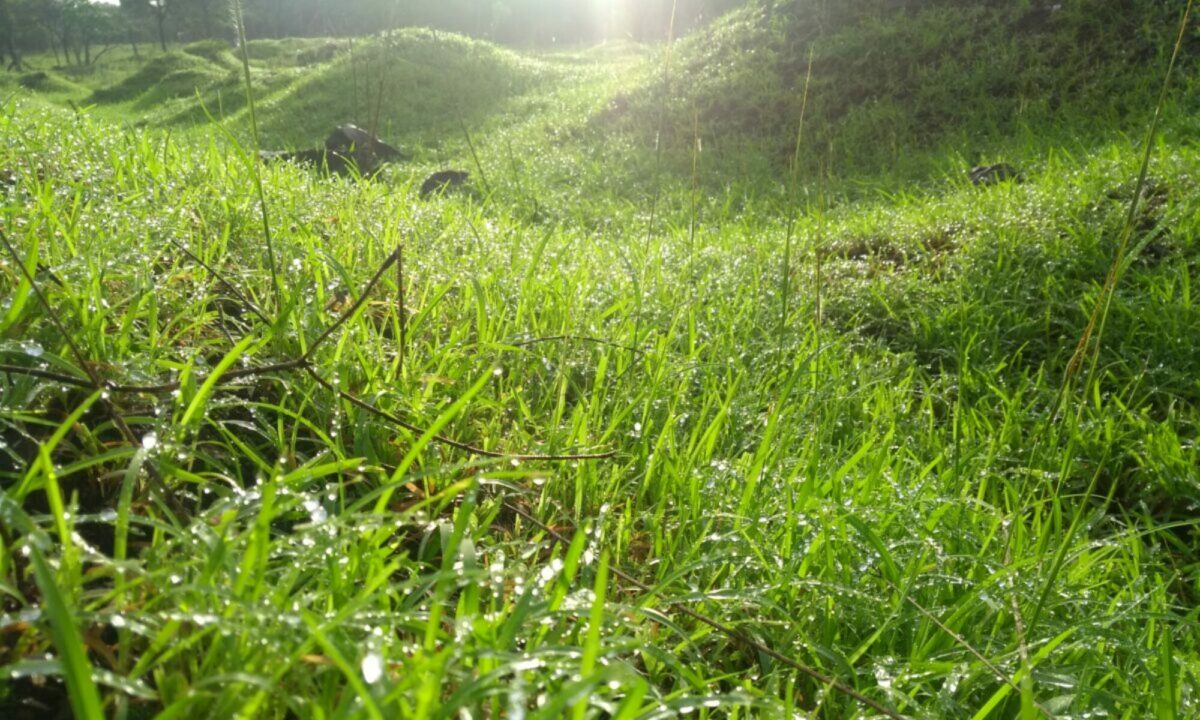
I have never been to Goa. But I am willing to go there. This photographs have charged up me.
You will enjoy your visit. Do plan to go soon. The temperatures will start rising from Feb end onwards. Thanks for visiting my blog and your comment. 🙂